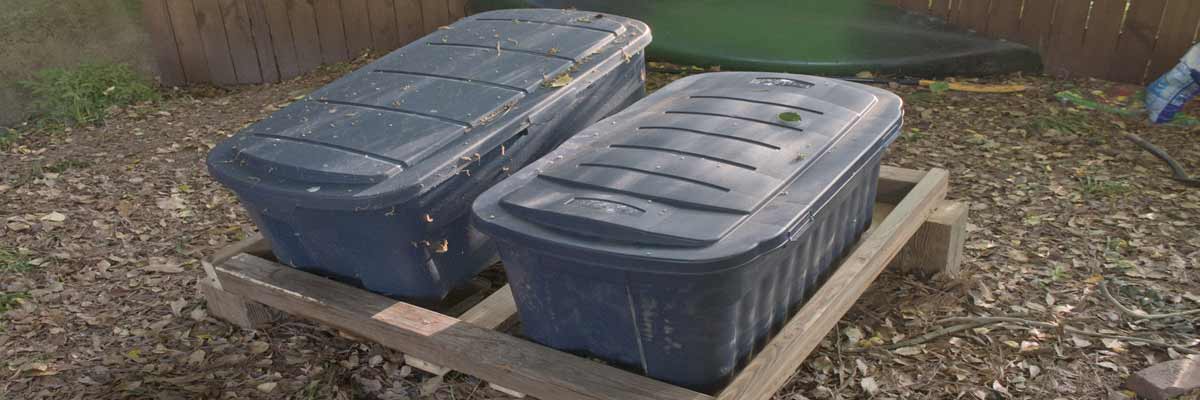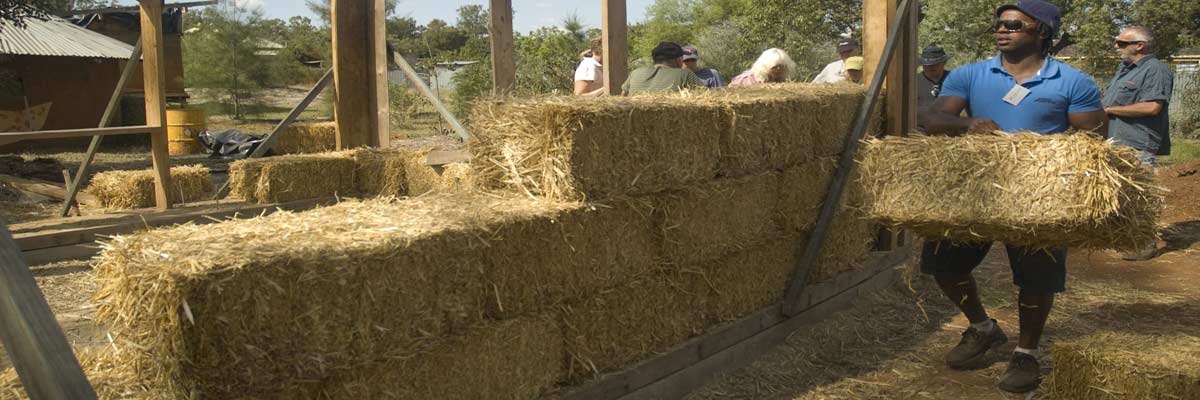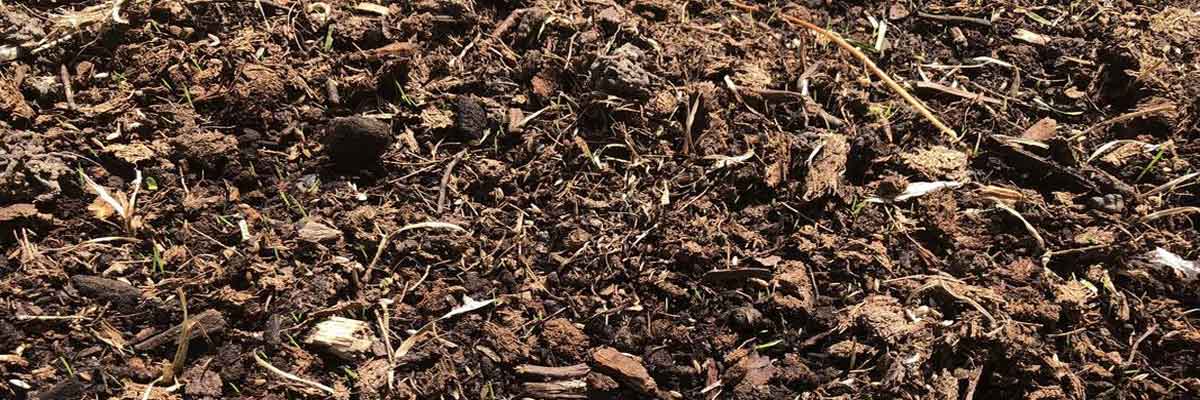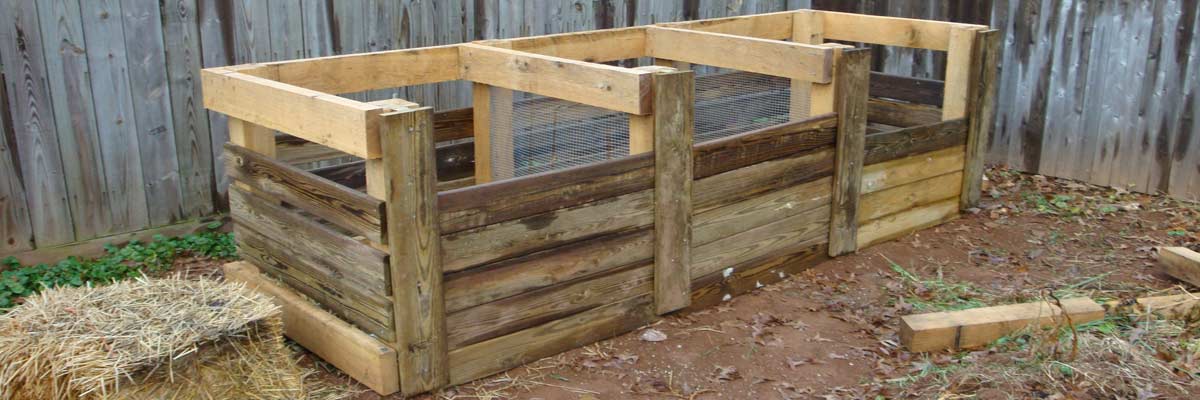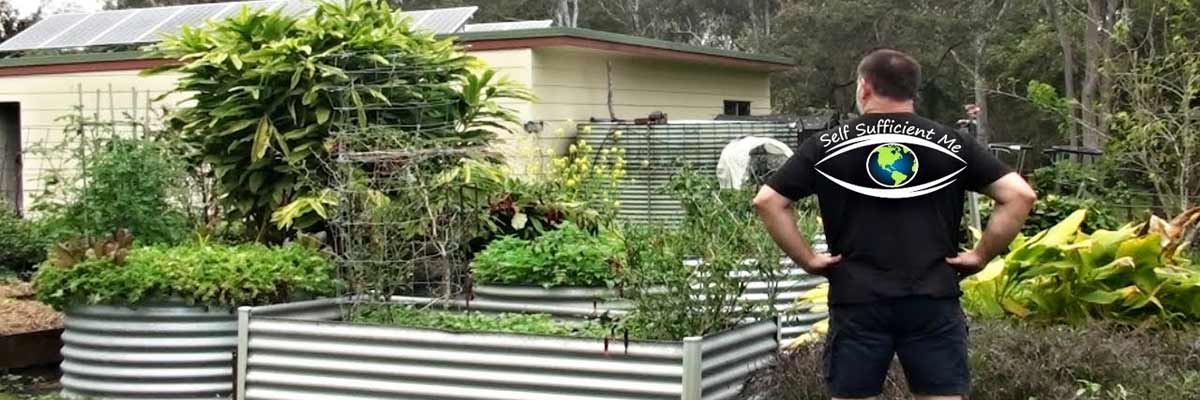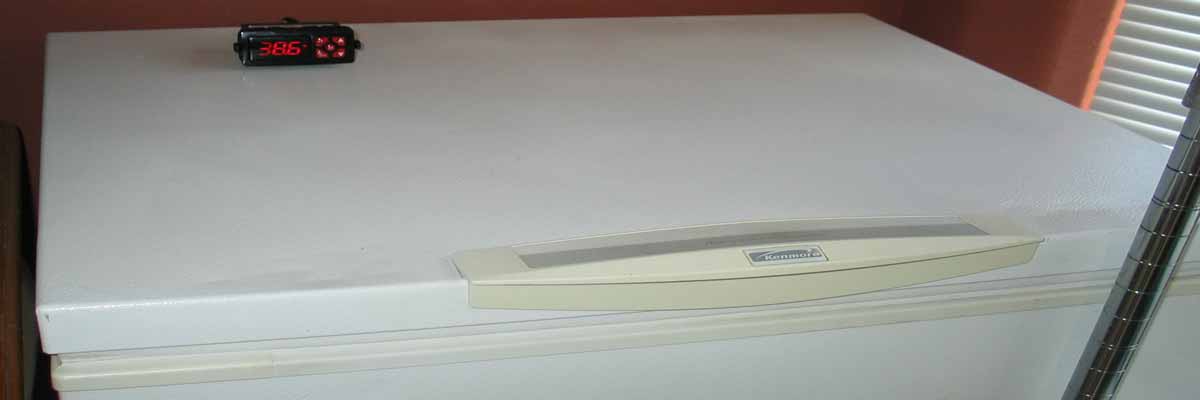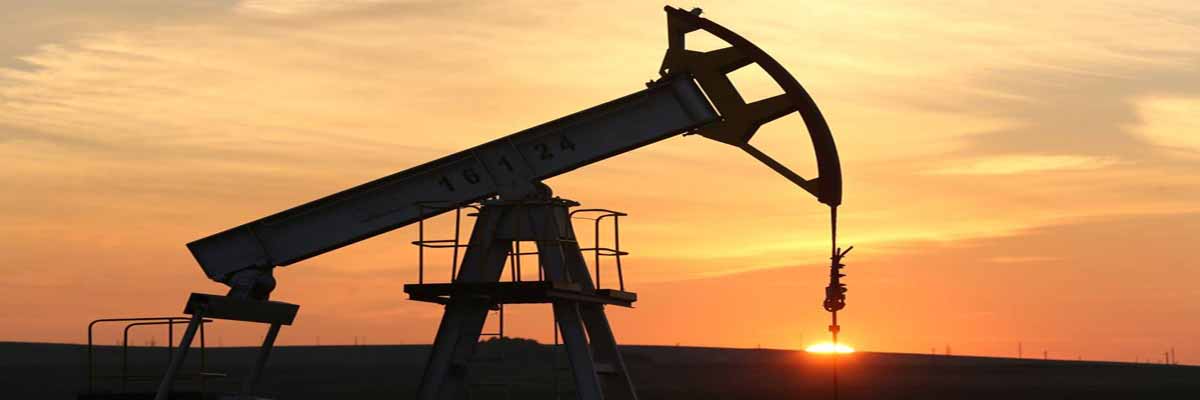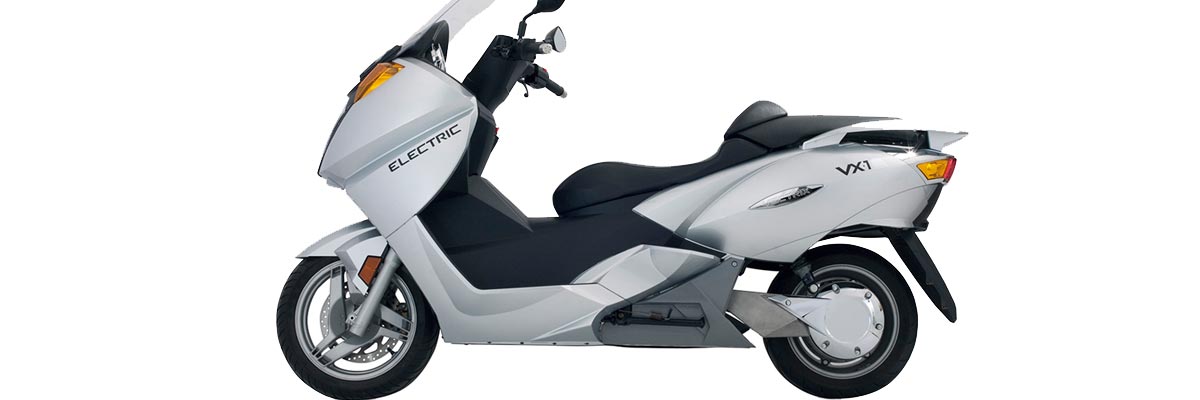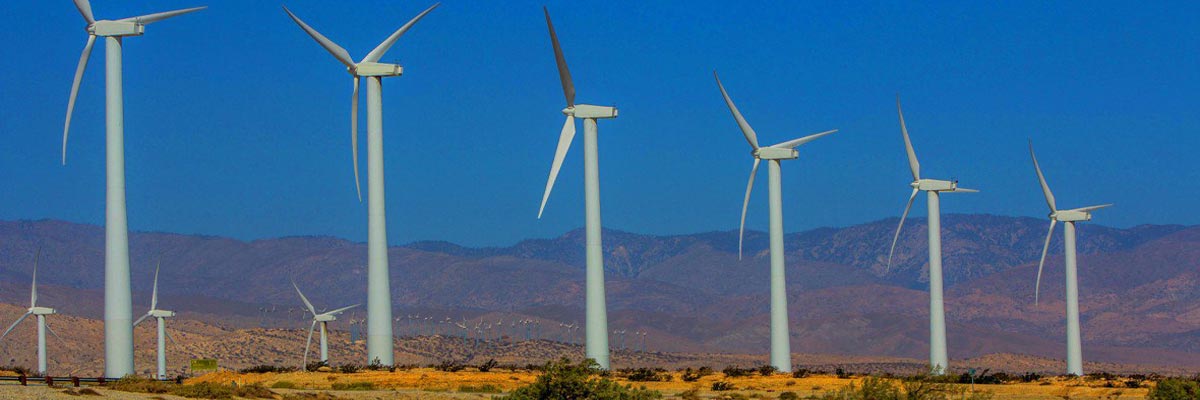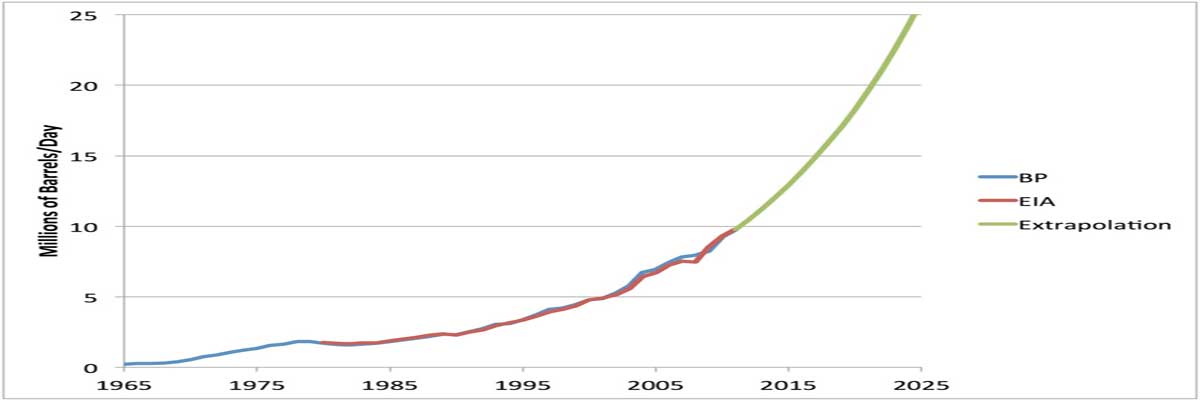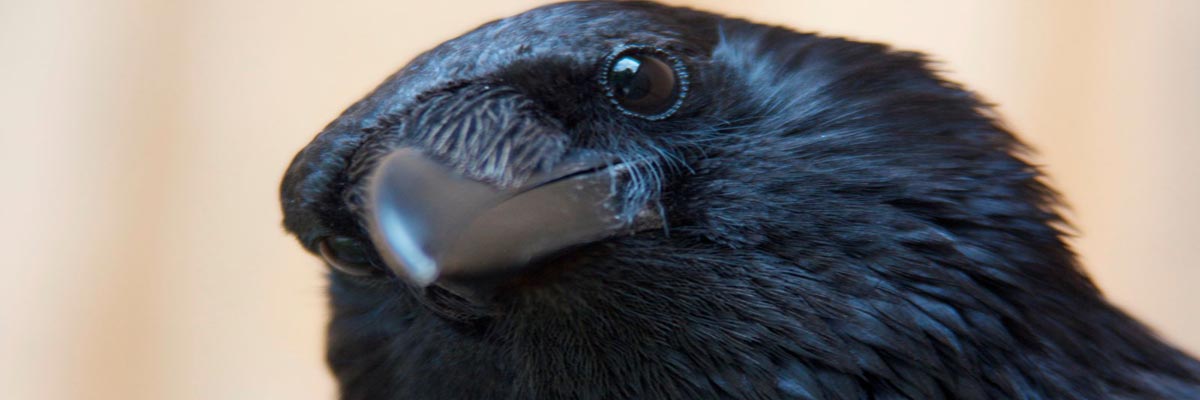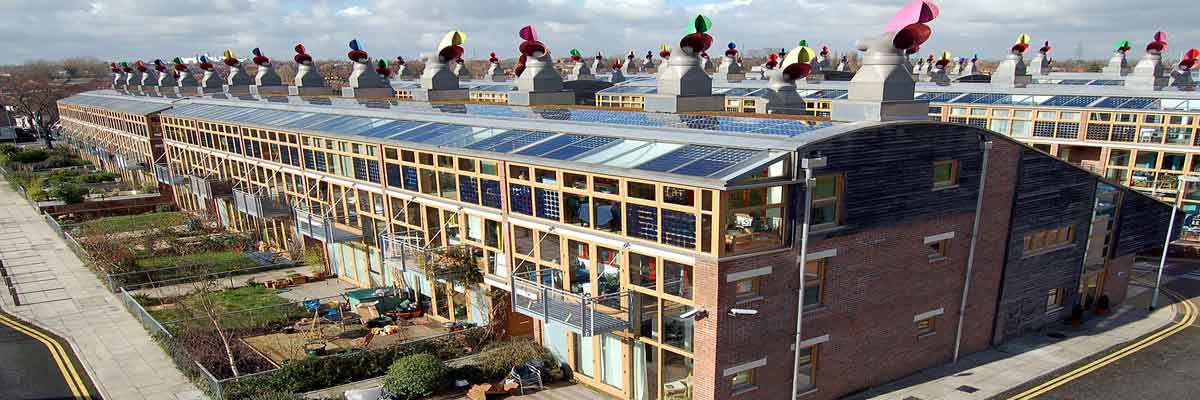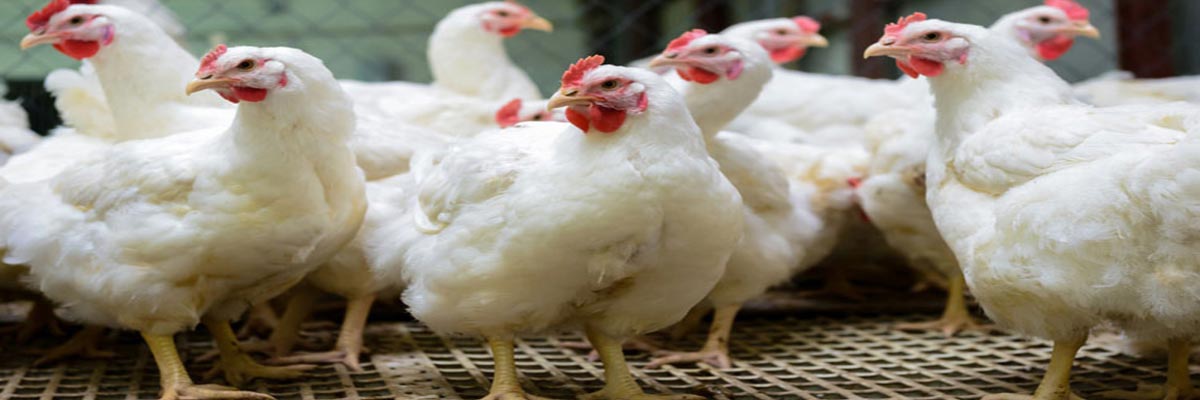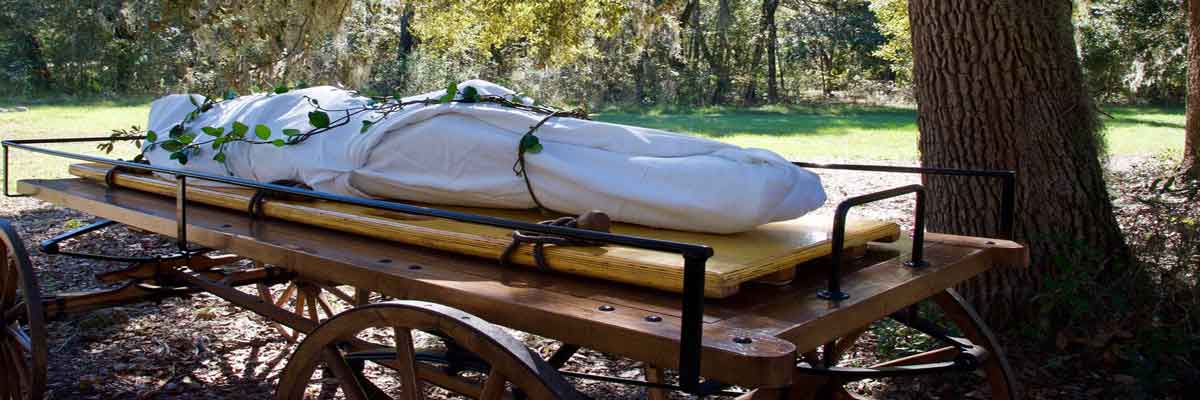How To: Make A Worm Bin For Your Home
Most people don’t associate worm bins with something that can exist inside your home. However, with the right ventilation and setup, your worms will be more than happy to do their work in your company — without upsetting guests who might cringe at the thought. The secret is in using Rubbermaid Roughneck 10 Gallon Plastic Containers; the type that most people use for storing winter clothing or footwear. Their unassuming appearance make for easy integration of a worm bin in the basement, pantry, etc.
The instructions after the jump are really easy to follow. I haven’t tried it myself yet, but admit to wanting faster compost; especially with winter drawing fast and thoughts of Spring taking root. I’ve never tried worm composting, but hear it’s pretty effective. Anyone have any suggestions for worm bin composting inside the home? Take a look at these plans and tell us what you think!
Welcome To The Halloween Edition Of The Carnival of The Green #51!
Last week’s carnival was hosted at How To Save The World and next week’s will kick off November at CityHippy! Of course, many thanks to the carnival creators, CityHippy and TriplePundit. You can hit either link for more information on how to host the carnival on your site.
This week, we’ve taken the sites you love and given them the morbid makeover. Sure, it’s nothing too frightening, but we had some fun with some text generators and gave most of you a tombstone. We kept the toe tag for Groovy. Happy Halloween!
DIY :: Strawbale Coldframe
I recently overheard Albert Bates of The Farm make mention of using strawbale walls in greenhouses. Typically strawbale construction treats the straw walls with a lime and clay plaster to create a breathable, weather and bug resistant barrier. If not the bales rot. However when the bales begin to breakdown the process gives off heat. Mr. Bates leaves the strawbale greenhouse walls untreated so that they will decompose over the winter and give off heat to keep the plants warm. The following spring the partially decomposed walls are used to mulch the garden. I scaled down the idea a bit and built myself a strawbale cold frame. Here’s how to do it.
Groovy Challenge :: Stealing Soil
On our own, nongroovy websites Matt and I have been talking about the great autumn resource of fallen leaves from deciduous trees. Sure you can rake the leaves from your yard and use them as mulch or add them to your compost pile but what about all those bags of leaves you see on the side of the road piled up as other people’s trash? The process by which trees produce leaves that then fall and decompose is how soil is created. Those people are throwing away soil. Are they crazy!?!? Every year 25 billion tons of topsoil is lost to the world. The way I see it I have a duty to stop and pick up those bags and make sure that they are indeed turned into life supporting soil. Sure they’ll rot wherever they end up but why not in my garden helping me to grow yummy, superlocal food?
So here’s the challenge. Matt, I bet I can pick up more bags of leaves (soil) than you can. If you accept my challenge and I do pick up more bags, you will have to do something. But if you happen to collect more bags of leaves from the side of the road then I will have to do something. And we’ll let the readers decide what that something is. What do you say?
DIY Compost Bin
In the spirit of this newly announced competition, I put together a larger compost bin to collect our (and yes, possibly our neighbor’s) leaves this fall. This will supplement our smaller secure bin that we use for kitchen scraps – It keeps the skunks out.
Killing two birds with one stone, I got rid of a good portion of my “reclaimed wood pile” (that was not Mrs. B’s favorite), and built myself a fine compost bin.
A picture is worth a 1000 words, so without further ado: (click more to see pics and for dimensions)
Interview :: Path to Freedom
Jules Dervaes and his family are fueling a revolution. More and more Americans are waking up to reality and beginning to recognize that we have real problems at hand concerning energy and the environment. An increasing numbers of these concerned citizens are seeking ways to live more conscious, self-sufficient lives. However trying to transition from the consumer culture towards a more sustainable way of life takes both inspiration and information. That’s were Jules Dervaes comes in. He calls his project Path to Freedom. It’s an attempt to live more sustainably and rely less on factory farming and genetically modified foods. But instead of moving to the country and starting a farm, Jules Dervaes and his family stayed in their own neighborhood to make their change. They live in Pasadena, California on a small urban lot. Their path towards sustainability, the Path to Freedom as Jules likes to say, means making real change right at home.
0.1 kWh/day Refrigerator
I guess that this “hack” from a chest freezer to a super-efficient refrigerator has been around for a year or so (2005). This just proves that you have to poke around to find something good, and when you do share it with others. (I wonder if the folks from path to freedom have seen this one yet.)
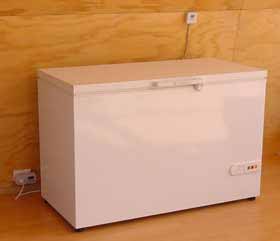 I found Mt. Best via farmlet, 2 great new sites to bookmark (new to me anyways), both out of NZ.
I found Mt. Best via farmlet, 2 great new sites to bookmark (new to me anyways), both out of NZ.
Here’s what they have to say about their fridge:
” My chest fridge (Vestfrost freezer turned into a fridge) consumes about 0.1 kWh a day. It works only about 2 minutes per hour. At all other times it is perfectly quiet and consumes no power whatsoever. My wind/solar system batteries and power-sensing inverter simply love it.
It is obvious that a truly energy efficient fridge does not cost any more money than a mediocre one. It actually costs less. It also has extra features, such as digital temperature display that gives you full control on the temperature settings inside.”
The Heart of a Revolution
A Summary: Beyond Energy Alternatives
The Third US Conference on Peak Oil and Community Solutions
September 2006 Yellow Springs, Ohio
Albert Einstein said, “We cannot solve our problems with the same thinking we used when we created them.” He also said, “Any fool can make things bigger, more complex, and more violent. It takes a touch of genius-and a lot of courage-to move in the opposite direction.” I spent the weekend with genius and with courage, and I am happy to report that they are alive and well and working on our problems. Most Americans are not yet familiar with the coming tide of instability. Asleep and dreaming the American Dream, many are unaware of the issues associated with energy and environment that face our people and all of humankind. Scores of those who are aware of our troubles have convinced themselves that the answer lies in more of the same. But there are those who have another idea.
Groovy Video: Vectrix Electric Bike
The electric car had its time a few years back and received a movie detailing its death. Investors in the next wave of electric-powered transportation are hoping that timing and technology will help prevent a sequel at the box office. Based in Europe, Vectrix is one such company banking on the power of a green, clean, electric bike to help reinvent the personal small transportation landscape — and keep oil executives awake at night worried about its potential. Groovy Green recently had the opportunity to visit the new Vectric production plant in New Bedford, Massachusetts. We test drove the new bikes (set for release in early 2007, Europe next month) and toured the assembly plant with V.P. of Technology, Peter S. Hughes. Below is our report — but stay tuned for more on Vectrix and other electric bikes hitting the scene in the next six months.
It should also be noted that all comments in this video are expressed by Groovy Green and are not the opinions of Vectrix Corp. There are also some corrections to the video: 1.) Vectrix is in fact not a European company, but an American one. 2.) The price of the Vectrix Maxi-Scooter is not $8,000 but $11,000.
We’re Dropping Our Agent & Going Independent! Update Bookmarks!
We’ve moved on from the rough and tumble eco neighborhood of GroovyGreen and have setup shop in Hollywood as an independent entity known simply as www.ecorazzi.com (previously known as http://ecorazz.groovygreen.com–but our agent didn’t think it would come across that well on-screen) Sadly, that means we will no longer be updating this domain. Sure, we’ll keep our older news posted here for archives sake, but if you want to know why Leo is shaving his legs to save the whales (he isn’t, but if he ever does) you should hit www.ecorazzi.com for the latest. So…What are you waiting for?
The Greening of the EPA – 100 Percent Green Power
News from the EPA:
“EPA is the first and only major federal agency to purchase green power equal to 100 percent of its estimated annual electricity use nationwide.
As of September 2006, EPA will be purchasing nearly 300 million kilowatt hours (kWh) of green power annually in the form of renewable energy certificates (RECs) or delivered product. This amount is equal to 100 percent of the total estimated annual electricity consumption at all of EPA’s nearly 200 facilities across the country enough electricity to power 27,084 homes for an entire year.”
“616,279,179 pounds of carbon dioxide (CO2) emissions will be avoided annually the equivalent to removing 53,824 cars from the road for an entire year.”
I think this is good news, now if the rest of the U.S. Government will follow the example of the EPA we will see some huge changes… something tells me this may be a ways off.
Did Anyone Else Miss The Creation Of A New Ocean?
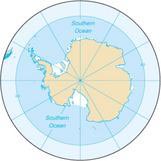 First Pluto gets demoted, and now I find out that a new ocean was created back in 2000. Who else missed this? Sure, Pluto gets tons of newspaper coverage, but nodoby even bothered to make a big deal that portions of the Atlantic, Pacific, and Indian were combined to create the Southern Ocean back in 2000.
First Pluto gets demoted, and now I find out that a new ocean was created back in 2000. Who else missed this? Sure, Pluto gets tons of newspaper coverage, but nodoby even bothered to make a big deal that portions of the Atlantic, Pacific, and Indian were combined to create the Southern Ocean back in 2000.
“The Southern Ocean extends from the coast of Antarctica north to 60 degrees south latitude. The Southern Ocean is now the fourth largest of the world’s five oceans (after the Pacific Ocean, Atlantic Ocean, and Indian Ocean, but larger than the Arctic Ocean).”
Let’s hope this particular ocean stays in the fourth position and doesn’t creep up due to melting icecaps and disappearing sea ice. The sea temperature of the Southern Ocean varies from -2°C to 10°C (28°F to 50°F). It’s home to the world’s largest ocean current, the Antarctic Circumpolar Current that moves east and transports 100 times the flow of all the world’s rivers.
Anyways, there’s your new fact for the day. There are now five oceans.
When Will the Peak Perk?
Jeffery Brown throws out a challenge to the main stream media.
“Who among you is going to have the courage to step forward and “break” the story that the lifeblood of the world economy–net oil export capacity–is now declining?”
Mr. Brown says, “I estimate that oil exports from the top 10 net oil exporters are probably now falling at a double digit annual rate.”
He’s an independent petroleum geologist from Dallas by the way; not one of them economists that thinks you can put dollar bills in your gas tank and drive to work. I once told two smart friends of mine, an engineer and a medical student, that physics trumps economics and they said I didn’t understand how the world works. I don’t. But I do think that as oil is physically less available “laws” of economics are going to spin on their heads. Just a little prediction for you this afternoon. Here’s one more. It will be obvious that we’ve peaked in oil production by the end of 2006. It’ll take a few more years, two maybe, for the most optimistic of oil cheerleaders to admit so (read up on the history of the peak in production in the U.S. – 1971). Then, suddenly everyone will be saying, “Yeah, of course we’ve peaked. That’s what oil fields do- Duh!” But by then the scurry to find the next source of fuel for our mobile lifestyles and our transportation dependent economy will be on in full force. My favorite are the news headlines that read, “How Will We Fuel The Cars of Tomorrow?”, or, “Is Ethanol The Answer?” No ethanol isn’t the answer. It’s only suggested as a part of the solution because Iowa is the first stop on the road to the White House. It seems very few people are stopping to consider ways of living that require less driving. Supply-side solutions will not solve the problem of the declining rate of petroleum production.
Passing on Progress in Search of Perfection?
This morning I fed my daughter Keaton carrots. Not yet six months old and I am already learning from her. The task of introducing solid foods to our baby has fallen mostly to my wife. Today is was my turn. After a few successful bites I started to think to myself, “Maybe I can feed her all these carrots without getting any on her face.” What an impossible goal! As she first began to get dirty I felt a twinge of disappointment. I wanted to feed her perfectly without any mess. The goal was not achieved. I had failed. But wait; I stopped myself and realized that I was successfully teaching another human being to eat carrots. She was learning a skill she’ll use for the rest of her life. I was introducing a healthy food and even went to the trouble of preparing it myself. I boiled the carrots and mechanically smashed them with my own two hands (I did use a masher). I was raising a daughter. Not all at once and not with individual burst of perfection but I was making progress on the road towards a happy, healthy human. What a success.
Al Gore – Revisited.
Seems as though I forgot the golden rule – “don’t believe everything you read in the paper.” Al Gore is not the man he was made out to be. He doesn’t own Occidental Stock. He does opt for green power for his home (and according to Grist – is putting up a solar PV array).
I was so glad to hear that Al is walking the talk. I am sorry that I doubted it.
This whole arguement gets into the realm of how much is enough? How green do you have to be exactly? How many lifestyle changes do you have to make? What is the threshold? I think that that answer can only be answered internally. Am I doing enough? How can I strive to do better? Should we be criticizing, encouraging, or lauding others? Or, should we be focusing on ourselves first off? All questions that I personally have been struggling with, and will continue to struggle with.
It’s too late on a friday night to sort it all out. So for pennance, I’ll leave you with a little TANKcatwhat after the jump
Telling Somebody
Please allow me this chance to reprint a letter from one friend to another.
Marcus,
It was good of you to write and ask about how Jenn and I have been doing since graduation. It’s been a while since you and I have been able to sit and talk on the front porch like we use to do in college. I don’t want to go getting all sentimental on you but I did enjoy those conversations. Everything’s going well here. Our daughter Kay is growing up fast (I hope you got the baby announcement- Jenn made me give her all the guys’ addresses). Sometimes it feels like if I blink she’ll be all grown up. Work’s fine and we like living in a small town. I never thought I’d say that but Atlanta just wore me out. All that driving made me feel like I was spending my whole life in the car. So we made the move. Jimmie and the NYC crowd make fun of me for living in Smalltown, USA but we like it. I can even bike to work. We’ve got a garden in the backyard and it’s been easy to meet neighbors, especially with such a cute baby girl (says the proud papa). We live in a small neighborhood on the edge of a pretty cool little historic town. There’s a tavern about a mile away and all the other stuff too that comes with a small town of course- an ice cream shop, a local grocery, the usual. Now I’m just babbling so I’ll get to the real reason I wanted to write.
Northern Ireland Mandates Green Energy For New Buildings
Now this is a little more like it. It’s amazing what can occur when an actual government gets behind renewable energy. In a step that’s sure to please environmentalists while making RE investors salivate, the ‘Government is proposing changes to the Building Regulations which will make the use of renewable energy compulsory in all new builds from 2008′ The new changes will apply to all new homes, company, and public buildings making solar hot water, roof photovoltaics, and small wind generation madatory in under two years.
Almost four thousand households will benefit immediately from the new systems. Those families on low incomes will also receive 100% grant assistance to install solar hot water systems for more than 500 homes. From the article,
‘Launching an 8 million renewable energy Household Programme, Peter Hain said that Northern Ireland is leading the rest of the United Kingdom in green energy. I Am fully committed to the use of renewable energy and I know how effective it can be. In my home in Wales, I have installed PV panels on my roof and this has resulted in my energy bill being halved. As a Government, we are also moving forward in changes to the building regulations to help and encourage greater use of renewable energy.’
Chick Update :: Last Call
This is your last chance to submit names for the 10 urban chickens we’re raising here at Groovy Green. The winner of our contest to “Name That Chicken” will receive one of these sweet T-shirts. Reply below with one or more names you think we should use on our animal additions to my backyard.
The chicks themselves are doing fine. They’re growing with great speed and it’s becoming obvious which ones are roosters and which ones are hens. Can you tell the ladies from the gents? I’ve started to give them time outside of their enclosure when I get home from work. They stay close by. When I first started to raised backyard chickens I thought they would do their best to escape but in reality they never wander to far away. At the first sign of danger they take off towards the safety of their chicken house. They did eat several seedlings from the garden. I have to remember to keep them out of newly planted areas, but for the most part I like to let them wander through the garden. They eat bugs and deposit fertilizer and are just fun to watch.
Be sure to leave a few names in reply and who knows, maybe you’ll win the coveted chicken T-shirt for your efforts.
Bobolink
I’ve recently received a number of emails calling for me to Kick the Oil Habit by supporting E85 which is a liquid fuel made up of 85% ethanol and 15% regular gasoline.
Bobolink has the same email in his inbox starred and ready for comment, and has been wondering what to do with it.
It’s just his luck that James from the Alt-E blog took the words right out of his mouth…
Is Ethanol / E85 Fuel the Solution?
Bobolink (and Steve) think that Pocket Farm is one of the best green/local/sustainable/farming/simple living/…kitchen sink blogs out there. If you’re reading Groovy Green, you need to be reading Pocket Farm.
This post tackles frugality, and offers up some simple ways to save some dough:
GreenSprings Natural Cemetery
Life is filled with choices. Many of them are daily, some are monumental, others take us in new directions. We use our decision-making skills to forecast positive end-results for our own lives and the people around us. Choices, however, are not limited to the mortal coil–we can also make choices now that will decide our impact on the planet well after we’re gone.
I’m not talking about wills or trust funds, but more your organic relationship with the planet. In the United States, most people lean towards traditional burial: a nice casket, flowers, tombstone, concrete vault, and a small plot. We intentionally exit the planet in much the same way we lived on it; above nature. People readily embrace the notion of ‘dust-to-dust’, but then fail to let that very act occur. Do you believe that air tight vault with the air tight coffin is going to preserve your body? And what the hell are you preserving it for? Is it vanity? Is it fear? Are you thinking that someone might open you back up one day and you’ll be embarrassed by what they see? Since most of the world believes the human body is simply a container for something larger (think: soul), why worry about what happens to it? Why spend thousands on beautiful wood that’s placed in the ground? Why bother with expensive accessories and adorations?
